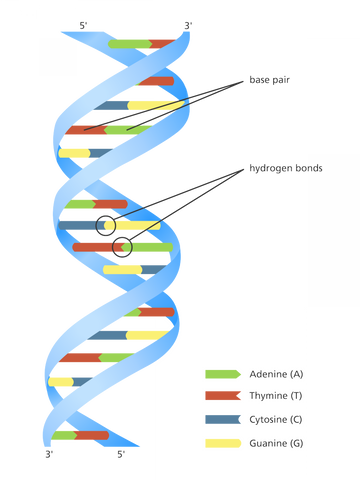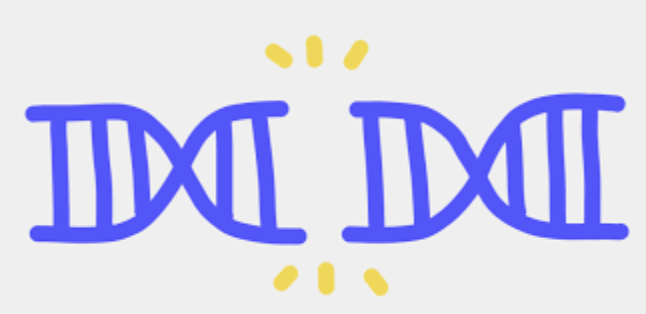1-Can we get sick, get cancer or even die from a simple nutrients deficiency?
2-Can nutrients deficiency cause DNA mutation (Double-strand breaks) which leads to many diseases!
We bring you nutrition science based evidences summarized from over 100 hours of research that you can digest on your coffee break.
They've been telling us lies that all disease are Genetics / inherited from our parents for over 50 years and there's nothing we can do about it!
Let's ask the real experts shall we!
Russell M. Jaffe MD, PhD, CCN, FRSM
Ashburn, Virginia, United States of America
Pathology, Immunology and Microbiology
He received his BS, MD, and PhD from the Boston University School of Medicine, completed residency training in clinical chemistry at the National Institutes of Health, and remained on the permanent senior staff before pursuing other interests, including starting the Health Studies Collegium think tank. Dr. Jaffe is board certified in Clinical Pathology and in Chemical Pathology. Dr. Jaffe was honored as an International Scientist of 2003 by the IBC, Oxford, England, the UK for his lifetime contributions to clinical medicine, biochemistry, immunology, methodology, and integrative health policy.
One minute with Dr. Russell Jaffe: "92% IS EPIGENETICS". Which means that you're in control of 92% of your Genetic health through your daily diet!
What is DNA? / How Do We Keep Our DNA Healthy?
DNA or deoxyribonucleic acid is a long molecule that contains our unique genetic code. Like a recipe book, it holds the instructions for making all the proteins in our bodies.
-
Your genome? is made of a chemical called deoxyribonucleic acid, or DNA for short.
-
DNA contains four basic building blocks or ‘bases?’: adenine? (A), cytosine? (C), guanine? (G) and thymine? (T).
-
The order, or sequence, of these bases, form the instructions in the genome.
-
DNA is a two-stranded molecule.
-
DNA has a unique ‘double helix’ shape, like a twisted ladder.

An illustration to show the double helix structure of DNA.
Image credit: Genome Research Limited
Double-strand breaks in DNA can be lethal to a cell. How do cells fix them? M. Cristina Negritto, Ph.D. (Dept. of Biology, Pomona College)
-
Each strand is composed of long sequences of the four bases, A, C, G, and T.
-
The bases on one strand of the DNA molecule pair together with complementary? bases on the opposite strand of DNA to form the ‘rungs’ of the DNA ‘ladder’.
-
The bases always pair together in the same way, A with T, C with G.
-
Each base pair is joined together by hydrogen bonds?.
-
Each strand of DNA has a beginning and an end called 5’ (five prime) and 3’ (three prime) respectively.
-
The two strands run in the opposite direction (antiparallel) to each other so that one runs 5’ to 3’ and one runs 3’ to 5’, they are called the sense strand and the antisense strand, respectively.
-
The strands are separated during DNA replication?.
-
This double helix structure was first discovered by Francis Crick and James Watson with the help of Rosalind Franklin and Maurice Wilkins.
-
The human genome is made of 3.2 billion bases of DNA but other organisms have different genome sizes.
The fact is that DNA mutation mostly caused by exposure to radiation, X-rays or Chemotherapy is true but also nutrition deficiencies is the bigger culprit!
Ref: Dr. Jacob Teitelbaum and Dr. Gottlieb’s book Real Cause Real Cure.
This state of disease due to nutritional deficiency is the basis of the propounded “triage theory” of world-class scientist Bruce Ames, Ph.D., professor of biochemistry and molecular biology at the University of California, Berkeley, and inventor of the Ames Test, the standard method used to determine whether a chemical can cause cancer.
The triage theory says that the body copes with micronutrient deficiencies by using available vitamins and minerals to ensure day-to-day survival.
The result: The body’s long-term needs are shortchanged, causing chronic diseases— specifically, the current plague of cancer, heart disease, type 2 diabetes, arthritis, osteoporosis, and Alzheimer’s.
Dr. Bruce Ames compiled the following list and it reads a lot like the label of a typical multivitamin/mineral supplement.
Acetyl-L-carnitine Alpha-lipoic acid Biotin Calcium Choline Cobalamin (vitamin B12) Copper Folate Iron Magnesium Niacin Omega-3 fatty acids Pantothenate Potassium (vitamin B6) (vitamin B2) Selenium Thiamin (vitamin B1) Vitamin D Zinc In the following sections, you’ll find a nutrient-by-nutrient guide to the level of vitamin and mineral supplementation that can prevent these deficiencies and— most important— optimize your health. For each nutrient, we also present the diseases that can be prevented, and sometimes cured, by treating a deficiency. This is one of the longest chapters in the book. Why? Because I think that nutritional deficiency is the leading cause of so many modern illnesses and that simple nutritional support is one of the most powerful weapons in your self-care arsenal.
(Professor Bruce Ames explains in couple of minutes)
Bruce N. Ames
Micronutrient under Nutrition in America!
-
80% deficient in Magnesium
-
49% deficient in Vitamin B6
-
65% of women deficient in Folic Acid
-
80% deficient in Vitamin D
-
93% deficient in Vitamin E
-
61% deficient in Vitamin C plus K, Calcium, Potassium and Omega 3’s. And the list goes on…
“In addition, you’ll need a minimum of 15 vitamins and a minimum of 15 minerals that are cofactors for proteins. These proteins are needed for your metabolism to function. If you don’t get any one of these 30 substances, you should die!”
“So these are just the minimum 30 essential micro-nutrients that we need to barely survive. You pay a heavy price if you are deficient just a little in just one of these nutrients you pay heavy price by aging you faster!”
Professor Ames believes that there are at least five types of cancer that are related just to Foliate deficiency. He also found in culture lab research that Biotin deficiency leads to an overproduction of oxidants. In your Mitochondria, you’re burning fat and carbohydrates. This process is adding four electrons to oxygen to release energy. If you add the electron’s one at the time you get superoxide and hydrogen peroxide, which are not good for the body. This happens with normal aging process, but now we know it also happens when you’re short on vitamins and minerals!
Dr. David Kellen shows that Magnesium deficiencies induce mitochondria protein cross-link. There may be other mineral shortages that will cause similar things. Professor Ames continues by saying that he and Dr. Kellen plugged into Google 30 different vitamin and mineral deficiencies using key terms such as “mutation”, “cancer”, and “chromosome break” and found:
-
Calcium deficiency leads to chromosome breaks and colon cancer.
-
Folate deficiency leads to chromosome breaks in mice and humans along with colon cancer in humans.
-
Vitamin D deficiency leads to chromosome breaks and many types of cancer.
-
Magnesium deficiency leads to chromosome breaks in humans.
-
Zinc deficiency leads to Fong’s disease and esophageal cancer in humans.
-
Potassium deficiency leads to cardiovascular diseases.
-
Vitamin B12 deficiency leads to chromosome breaks.
-
Selenium deficiency leads to DNA damage and cancer in humans.
-
Omega-3 fatty acid deficiency leads to cancer.
-
Niacin deficiency leads to chromosome breaks (DNA damage).
-
Choline deficiency leads to DNA damage in humans.
Double-strand breaks (DSBs) in DNA form as a result of exposure to exogenous agents such as radiation, Xray's and certain chemicals but today's scientists showing us DNA mutation from deficiencies in specific nutrients as well as through endogenous processes.

Professor Bruce continues briefly explains building the cell research using Acetyl L-Carnitine & Alpha-Lipoic Acid in a few minutes...
Ref: Mechanisms and Consequences of Double-strand DNA Break ...
DSB: double-strand break
HRR: homology-directed, recombination-medi...
NHEJ: non-homologous end joining
BER: base excision repair
Dr. Rhonda Patrick briefly explains the connecting between vitamin D and Telomere!
Dr. Bruce Ames: "The right nutrients / supplementation can help Lower inflammation and help repair some DNA mutation".
Dr. Mark Hyman Says: "Reclaim your health".
And what about athletes?
Athletes with exercise-induced fatigue have abnormally short muscle DNA telomeres TELOMERES >> EXERCISE & TELOMERES>> ATHLETES WITH EXERCISE INDUCED FATIGUE.
https://resources.teloyears.com/exercise-telomeres/athletes-exercise-induced-fatigue-abnormally-short-muscle-dna-telomeres
Peer-Reviewed Scientific Journal: Medicine & Science in Sports & Exercise Size of study: 13 subjects with FAMS, 13 healthy controls Summary This study found that endurance athletes diagnosed with fatigued athlete myopathic syndrome had shorter telomeres in their muscle cells than controls.
Although the beneficial health effects of regular moderate exercise are well established, there is substantial evidence that the heavy training and racing carried out by endurance athletes can cause skeletal muscle damage. This damage is repaired by satellite cells that can undergo a finite number of cell divisions. In this study, we have compared a marker of skeletal muscle regeneration of athletes with exercise-associated chronic fatigue, a condition labeled the "fatigued athlete myopathic syndrome" (FAMS), with healthy asymptomatic age- and mileage-matched control endurance athletes. Muscle biopsies of the vastus lateralis were obtained from 13 patients diagnosed with FAMS and from 13 healthy control subjects. DNA was extracted from the muscle samples and their telomeric restriction fragment (TRF) or telomere lengths were measured by Southern blot analysis. All 13 symptomatic athletes reported a progressive decline in athletic performance, decreased ability to tolerate high mileage training, and excessive muscular fatigue during exercise. The minimum value of TRF lengths (4.0 +/- 1.8 kb) measured on the DNA from vastus lateralis biopsies from these athletes were significantly shorter than those from 13 age- and mileage-matched control athletes (5.4 +/- 0.6 kb, P < 0.05). Three of the FAMS patients had extremely short telomeres (1.0 +/- 0.3 kb). The minimum TRF lengths of the remaining 10 symptomatic athletes (4.9 +/- 0.5 kb, P < 0.05) were also significantly shorter than those of the control athletes. These findings suggest that skeletal muscle from symptomatic athletes with FAMS show extensive regeneration which most probably results from more frequent bouts of satellite cell proliferation in response to recurrent training- and racing-induced muscle injury.
This study is intriguing because it hints at the long-term implications of intense training over long periods of time. Intense exercise incurs high oxidative stress loads and the repetitive injury to muscle requires high levels of cellular replication – both of these conditions are primary contributors to telomere attrition and also Lower Testosterone levels.
Interview with Dr. David Sinclair (Harvard medical School) explaining briefly the importance of maintaining your healthy Testosterone for maintaining muscle mass and longevity. (Dr. David Sinclair brought his age on the cellular level from 53 down to 31 years old using specific diet protocol and by maintaining a healthy Testosterone levels according to his blood tests results by InsideTracker. (Couple of minutes video clip with Dr. David Sinclair)
Scientists reverse aging-associated skin wrinkles and hair loss in a mouse model when adding antibiotic!. Keshav Singh, Ph.D. Ref, https://www.uab.edu/news/research/item/9607-scientists-reverse-aging-associated-skin-wrinkles-and-hair-loss-in-a-mouse-model
The mutation in the mouse model is induced when the antibiotic doxycycline is added to the food or drinking water. This causes depletion of mitochondrial DNA because the enzyme to replicate the DNA becomes inactive.
These photos show the hair loss and wrinkled skin after two months of doxycycline induction, and the same mouse a month later after doxycycline was stopped, allowing restoration of the depleted mitochondrial DNA.
The mitochondria of induced-mutation mice had reduced mitochondrial DNA content, altered mitochondrial gene expression, and instability of the large complexes in mitochondria that are involved in oxidative phosphorylation.
Reversal of the mutation restored mitochondrial function, as well as the skin and hair pathology. This showed that mitochondria are reversible regulators of skin aging and loss of hair, an observation that Singh calls “surprising.”
“It suggests that epigenetic mechanisms underlying mitochondria-to-nucleus cross-talk must play an important role in the restoration of normal skin and hair phenotype,” Singh said, who has a secondary UAB appointment as professor of pathology. “Further experiments are required to determine whether phenotypic changes in other organs can also be reversed to wildtype level by restoration of mitochondrial DNA.”
Co-authors with Singh for the paper, “Reversing wrinkled skin and hair loss in mice by restoring mitochondrial function,” published in the Cell Death and Disease, a Nature online journal, are Bhupendra Singh, Trenton R. Schoeb and Prachi Bajpai, UAB Department of Genetics; and Andrzej Slominski, UAB Department of Dermatology.
What other factors that can deplete essential nutrients / can lead to DNA mutations?
In 51 second video clip with Cardiologist Dr. Russell Jaffe': "Environmental Toxins Zap Your Body From Essential Nutrients".
How can deficiency in just one vitamin could threaten your life!
Dr. Rhonda Patrick:: “Among patients with COVID-19: 100% of the people who died in Indonesian were deficient in vitamin D".
ASK YOURSELF THIS,
Who's to blame for not using enough vitamin D for all those who died from cv19?! (even if we were able to save 50%, 40%, 30%, 20% or save just one person life from dying from CV19 or monkeypox?
Below is a slide from Dr. Rhonda Patrick presentation showing the devastating consequences of vitamin D deficiency on aging that causes DNA mutation!
The mouse on the lower right side with normal vitamin D level looks very healthy and the mouse on the lower left side (same age as the healthy mouse) looks as old as 4 years old mouse / about to die after only 4 months of vitamin D deficiency.

Ignoring historic facts is deadly💀!
Between 1500 and 1800, Estimated two million sailors killed by Scurvy... Vitamin C deficiency. ! : Jonathan Lamb wrote: "In 1499, Vasco da Gama.
However, it was not until 1747 that James Lind formally demonstrated that scurvy could be treated by supplementing the diet with citrus fruit, in the first ever clinical trial. In 1753.
Why nutrition is a lot more important than we think?
How about vitamin C? "History backs up the use of vitamin C".
W. Gifford-Jones, MD, who happens to be a Harvard trained surgeon and medical journalist, discusses vitamin C immense health benefits”
With people dying across the world?. In a recent article, W. Gifford-Jones, M.D. urges the increase use of vitamin C. He calls these deaths needless as health authorities and doctors to continue to ignore the role high doses of vitamin C can play against virus infections.(Gifford-Jones, M.D explains briefly).
Cardiologist Dr. Thomas Levy explains in a few seconds video clip: "There's not a single virus in existence that has been tested in anyway in the test tube, in the body or in the animals that vitamin C is not been completely effective in eradicating it".
Cardiologist Dr. Thomas Levy continues to explains in one minute the immense health benefits of vitamin C!
And why should we consume different vitamins & minerals? (Dr. Russell Jaffe explains briefly).
1-RAW D3 VEGETARIAN + K2 (180 Servings / 6 months supply)https://lookingvibrant.com/products/raw-d3-vegetarian-k2
2-Raw Liposomal C + Bioflavonoids (Capsule)
https://lookingvibrant.com/products/vitamin-c-lipsomal-x120
3-Multivitamin Vegetarian (Liquid)
Save 15%
* Your discount code is LV15
* Free shipping $100+
* $100 Min purchase
Team-Lookingvibrant





